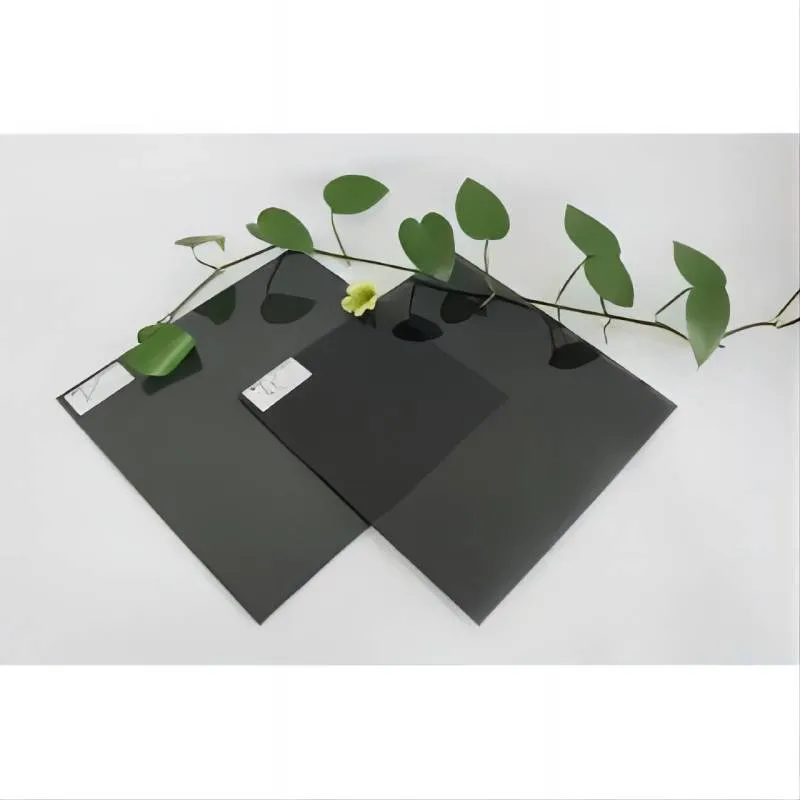The Allure and Versatility of Clear Glass Material
Clear glass has become an indispensable element in modern design and architecture, celebrated for its aesthetic appeal and functional attributes. With its transparency and clarity, clear glass serves as a bridge between the indoors and outdoors, allowing natural light to permeate spaces while creating an illusion of openness. This article explores the various aspects of clear glass material, its applications, benefits, and the evolving trends surrounding its use.
Historical Context
Glass-making dates back thousands of years, evolving from simple tools to intricate designs. The earliest examples of glass can be traced to ancient Mesopotamia and Egypt, where artisans crafted beads, vases, and window openings. However, clear glass in its modern form began to emerge during the Renaissance, paving the way for greater experimentation and innovation. With advancements in manufacturing processes such as the invention of the float glass method in the 20th century, clear glass became more accessible and widely used.
Architectural Significance
In architecture, clear glass is often used to enhance natural lighting, create a feeling of spaciousness, and connect interior spaces with the external environment. The incorporation of large glass panels in contemporary buildings has transformed their design and functionality. Structures like the Glass House by Philip Johnson and the Crystal Palace, originally built for the Great Exhibition of 1851, exemplify the pivotal role that clear glass plays in architectural innovation.
Clear glass facilitates unobstructed views, allowing occupants to feel at one with nature. This aspect is particularly beneficial in urban environments, where access to green spaces may be limited. By incorporating large glass windows and walls, architects create a seamless transition between inside and outside, promoting a sense of well-being and tranquility.
Applications in Interior Design
Beyond architecture, clear glass is a favored choice in interior design. From glass partitions that demarcate spaces without restricting light to table surfaces, shelving, and decorative accents, clear glass can enhance the aesthetic quality of a room. Its reflective properties can add dimension and elegance, making spaces appear larger and more inviting.
clear glass material
Moreover, clear glass allows for a minimalist design approach. In modern interiors, where clutter can detract from the overall ambiance, the use of clear glass furniture helps maintain a clean and airy feel. This trend is evident in the rise of glass dining tables, coffee tables, and shelving units that showcase the beauty of simplicity.
Benefits of Clear Glass
The benefits of using clear glass material extend beyond aesthetics. As a non-porous substance, glass is inherently hygienic, making it an ideal choice for kitchens and bathrooms. Its easy-to-clean surface helps maintain sanitary conditions, an essential aspect in spaces where food preparation and personal hygiene occur.
Glass is also environmentally friendly. It is 100% recyclable, making it a sustainable choice for eco-conscious consumers. When recycled, clear glass can be repurposed into new glass products, thus reducing waste and the demand for raw materials. Additionally, advancements in energy-efficient glazing technologies have led to the production of clear glass with improved insulation properties, reducing energy consumption in buildings.
Trends and Innovations
In recent years, the use of clear glass has been reimagined through innovative techniques and treatments. For example, smart glass technology allows users to control light transmission, providing privacy on demand while maintaining a sleek look. This technology can be particularly advantageous in commercial spaces, where a flexible environment is desirable.
Furthermore, the rise of biophilic design, which emphasizes the connection between humans and nature, has led to an increased use of clear glass to bring the outdoors inside. Architects and designers are experimenting with glass in creative ways, integrating it with natural elements like wood and stone to create harmonious environments.
Conclusion
Clear glass material continues to wield significant influence in both architecture and interior design. Its timeless appeal, coupled with the practical benefits it offers, ensures its place in contemporary construction and decor. As technology evolves and design trends shift, clear glass will undoubtedly adapt, remaining a fundamental aspect of modern aesthetics and functionality. Embracing the fluidity and transparency that clear glass provides, designers and architects will continue to envision spaces that are not only visually stunning but also enhance the human experience.
 Afrikaans
Afrikaans  Albanian
Albanian  Amharic
Amharic  Arabic
Arabic  Armenian
Armenian  Azerbaijani
Azerbaijani  Basque
Basque  Belarusian
Belarusian  Bengali
Bengali  Bosnian
Bosnian  Bulgarian
Bulgarian  Catalan
Catalan  Cebuano
Cebuano  Corsican
Corsican  Croatian
Croatian  Czech
Czech  Danish
Danish  Dutch
Dutch  English
English  Esperanto
Esperanto  Estonian
Estonian  Finnish
Finnish  French
French  Frisian
Frisian  Galician
Galician  Georgian
Georgian  German
German  Greek
Greek  Gujarati
Gujarati  Haitian Creole
Haitian Creole  hausa
hausa  hawaiian
hawaiian  Hebrew
Hebrew  Hindi
Hindi  Miao
Miao  Hungarian
Hungarian  Icelandic
Icelandic  igbo
igbo  Indonesian
Indonesian  irish
irish  Italian
Italian  Japanese
Japanese  Javanese
Javanese  Kannada
Kannada  kazakh
kazakh  Khmer
Khmer  Rwandese
Rwandese  Korean
Korean  Kurdish
Kurdish  Kyrgyz
Kyrgyz  Lao
Lao  Latin
Latin  Latvian
Latvian  Lithuanian
Lithuanian  Luxembourgish
Luxembourgish  Macedonian
Macedonian  Malgashi
Malgashi  Malay
Malay  Malayalam
Malayalam  Maltese
Maltese  Maori
Maori  Marathi
Marathi  Mongolian
Mongolian  Myanmar
Myanmar  Nepali
Nepali  Norwegian
Norwegian  Norwegian
Norwegian  Occitan
Occitan  Pashto
Pashto  Persian
Persian  Polish
Polish  Portuguese
Portuguese  Punjabi
Punjabi  Romanian
Romanian  Russian
Russian  Samoan
Samoan  Scottish Gaelic
Scottish Gaelic  Serbian
Serbian  Sesotho
Sesotho  Shona
Shona  Sindhi
Sindhi  Sinhala
Sinhala  Slovak
Slovak  Slovenian
Slovenian  Somali
Somali  Spanish
Spanish  Sundanese
Sundanese  Swahili
Swahili  Swedish
Swedish  Tagalog
Tagalog  Tajik
Tajik  Tamil
Tamil  Tatar
Tatar  Telugu
Telugu  Thai
Thai  Turkish
Turkish  Turkmen
Turkmen  Ukrainian
Ukrainian  Urdu
Urdu  Uighur
Uighur  Uzbek
Uzbek  Vietnamese
Vietnamese  Welsh
Welsh  Bantu
Bantu  Yiddish
Yiddish  Yoruba
Yoruba  Zulu
Zulu 

